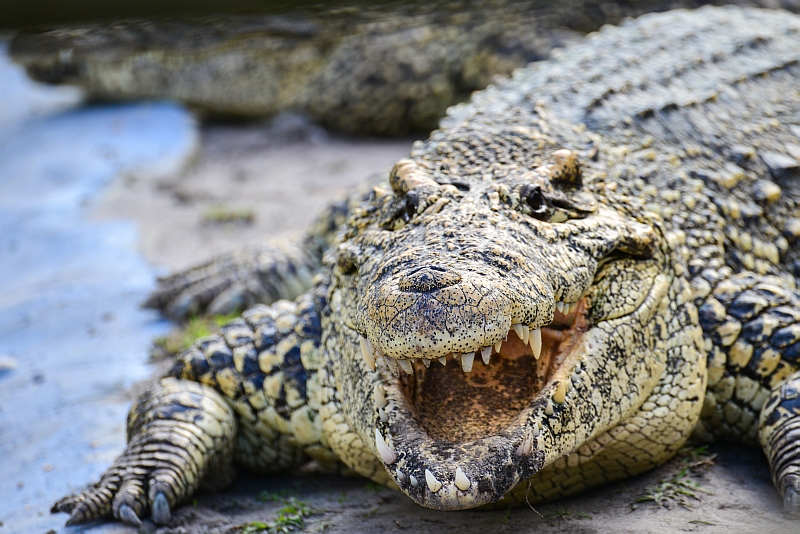One of the reasons it is illegal in most states to own an alligator, is that they are wild and unpredictable animals. They have been known to drag live animals and even small children back to their lair, or underwater, and have proven a menacing species in southern states like Louisiana and Florida. However, most recently, it is not the American crocodile that has gotten our attention. In recent years, a larger more aggression member of this species has been discovered living in the Sunshine State.
Called the “Nile Crocodile,” these animals hail from Africa and are much bigger than their American cousins. Between the years of 2009-12, there were reports of unusual-looking alligators seen by many residents of the state. One particular animal was brought in for observation from a home in Miami where an alligator was lounging on the porch. Under further analysis, the creature was found to have matching tissue samples as that of the Nile Crocodiles of South Africa.
These findings prompted research about how the Nile Crocodile might function and thrive in America’s south eastern states. A female specimen under observation in 2012 was tagged and re-released back into to the wild to track her growth and survival for two years. When she was brought back in, the animal was found to not only have adapted comfortably, but to have actually grown nearly 30% faster on American soil than the Nile Crocodiles do in Africa.
Nile Crocodiles: Not An Ideal Pet
American alligators are typically about 8-15 feet long, depending on if they are male or female. In comparison, the Nile crocodiles are on average about 16 feet long, but can grow to an impressive 20 feet in length. They are capable of stalking and hunting large game, including animals such as small horses and cattle, such as zebras and buffalo. In their native South Africa, the creatures have gone on record (from 2010-2014) as having attacked 480 people, 123 resulted in deaths.
Where Did These Nile Crocodiles Come From?
While the swamps and bayous in the deep South might already have a healthy population of alligators, it should shock us to find a completely different sub-species from Africa breeding prolifically here. Especially if the animals are bigger and more aggressive than the already-threatening gators we have known. How did these animals get loose American soil so far from their native home? When under observation, the crocodiles in the wild did not have matching DNA samples as that of the Nile crocodiles that reside in Floridian zoos. However, the free-roaming Nile crocs did have matching DNA to each other. This leads scientists to believe that these ever-growing colonies are actually the result of escaped illegally-traded Nile crocodiles brought here as exotic pets. Is this surprising? Not really. According to the Florida Fish and Wildlife Conservation Commission, there are believed to be over 500 wildlife and fish species that reside in Florida who are non-native to the country.
This just goes to show the risks that exotic animal trade poses. Enough escaped animals could begin creating sustainable colonies of potentially dangerous animals!

